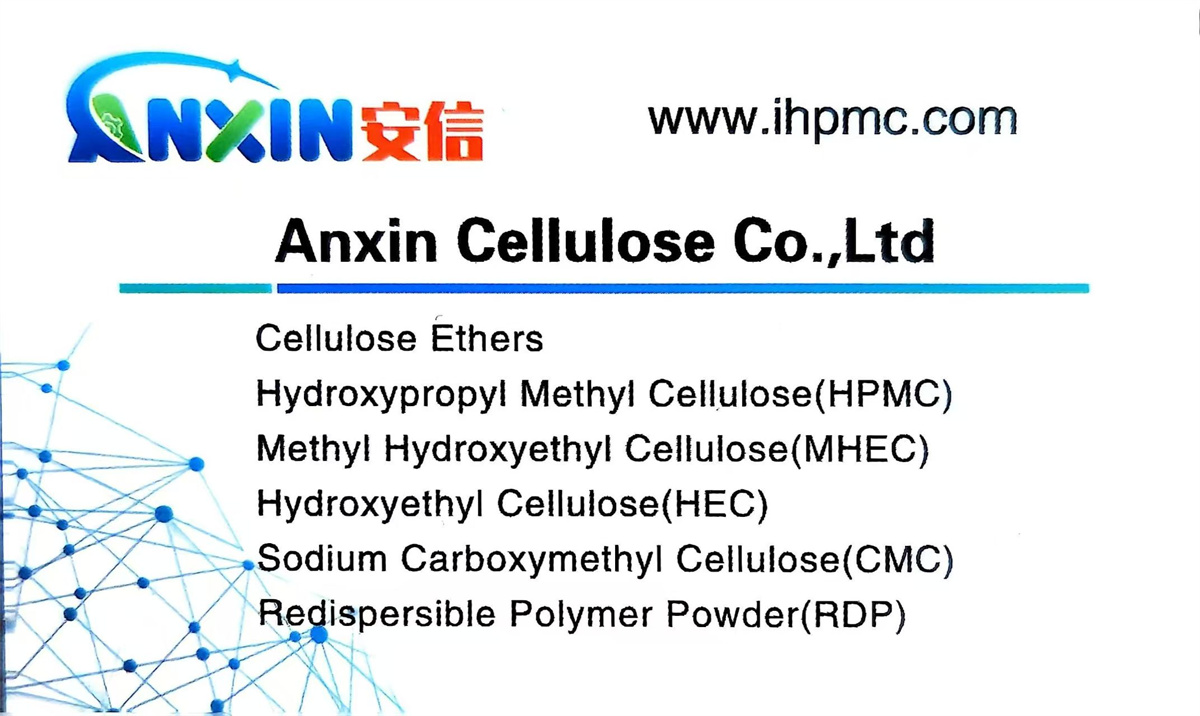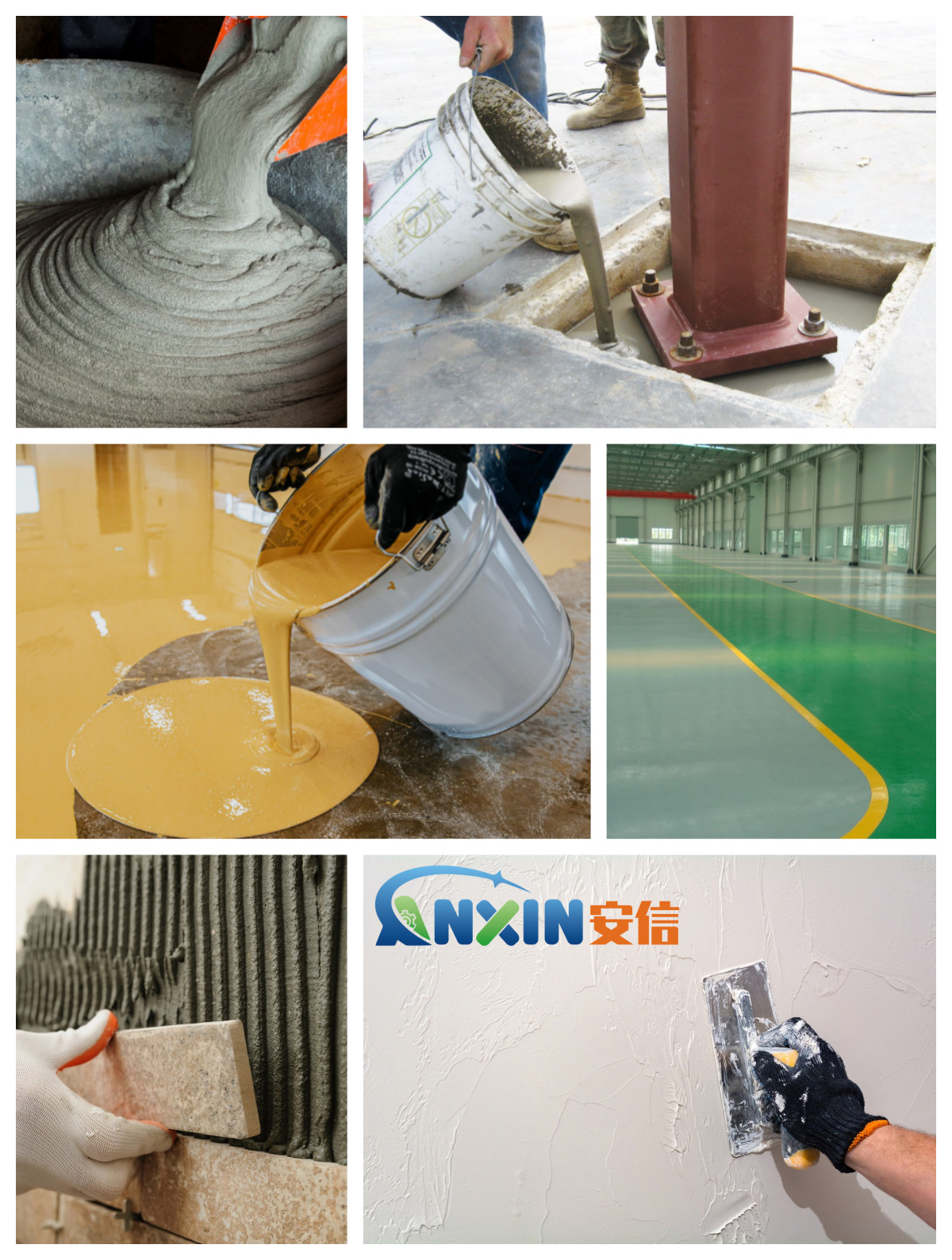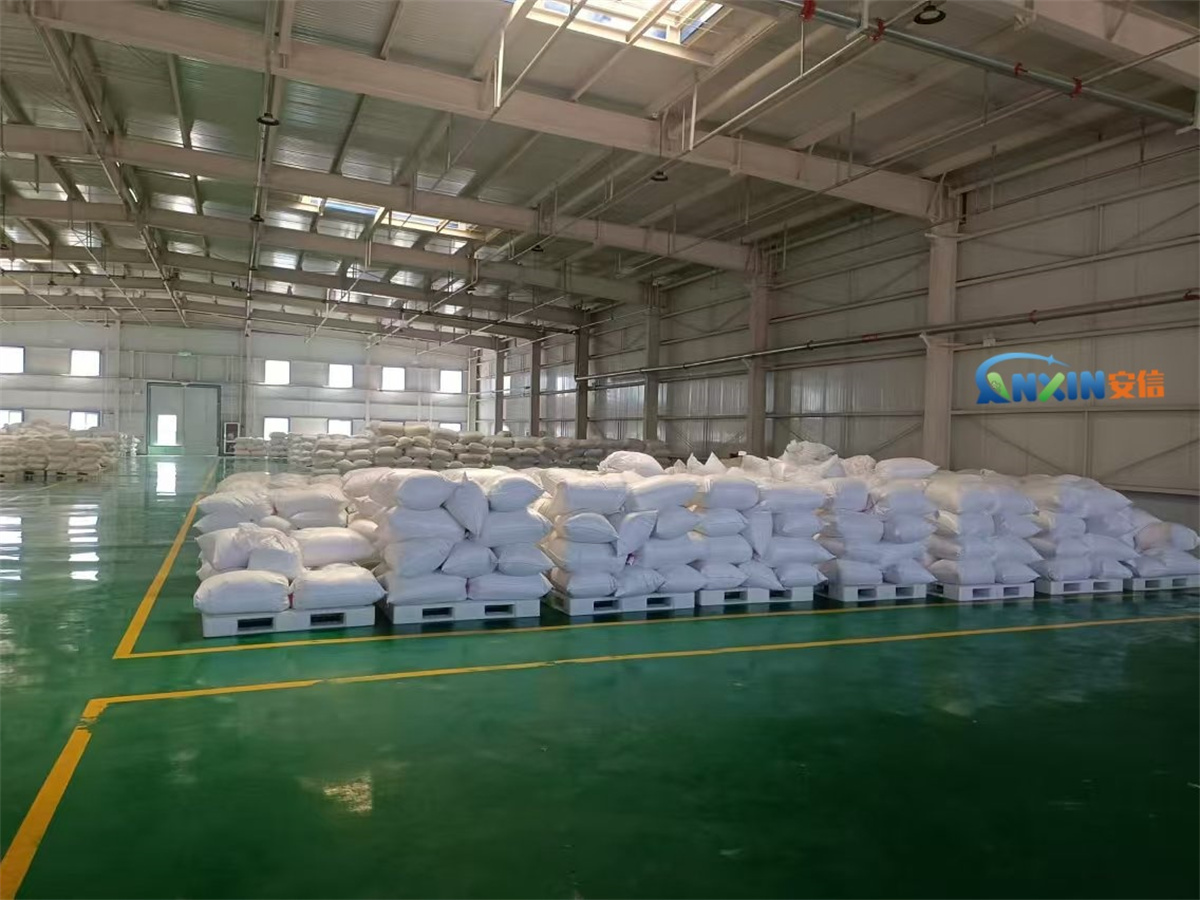Tile adhesion is a critical component of construction and interior design, ensuring that tiles remain firmly bonded to their substrates under various environmental conditions. Among the many materials used to enhance tile adhesion, cellulose ether stands out as a key additive, offering significant improvements in the performance and durability of tile adhesives.

Understanding Cellulose Ether
AnxinCel®Cellulose ether is a chemically modified derivative of natural cellulose, sourced from wood pulp or cotton. It is primarily used in the construction industry for its water retention, thickening, and binding properties. Common types of cellulose ether include:
Hydroxypropyl Methyl Cellulose (HPMC)
Each variant has unique characteristics, but HPMC is the most commonly used in tile adhesive formulations due to its optimal balance of properties.
Benefits of Cellulose Ether in Tile Adhesives
Cellulose ether enhances tile adhesives in several ways, making it an indispensable ingredient in modern construction. Key benefits include:
Improved Water Retention
Ensures adequate hydration of cementitious materials.
Extends open time, allowing workers more flexibility during tile placement.
Minimizes the risk of premature drying, which can weaken adhesion.
Enhanced Workability
Provides smooth and creamy consistency for easier application.
Improves spreadability and reduces drag during troweling.
Increased Bond Strength
Promotes uniform curing, leading to stronger bonds between tiles and substrates.
Enhances adhesion under different environmental conditions.
Sag Resistance
Prevents tiles from slipping on vertical surfaces.
Maintains the integrity of the adhesive layer during the curing process.

Compatibility with Various Substrates
Works effectively on diverse surfaces, including concrete, plaster, and drywall.
Mechanism of Action
Cellulose ether’s effectiveness in tile adhesives is attributed to its molecular structure and interactions with water and cementitious materials. Its primary functions include:
Water Retention: Cellulose ether forms a film over the adhesive surface, slowing down water evaporation and ensuring prolonged hydration of cement particles. This results in a stronger adhesive bond.
Thickening Effect: By increasing the viscosity of the adhesive, cellulose ether enhances its ability to hold tiles in place, especially on vertical surfaces.
Film Formation: During the curing process, AnxinCel®cellulose ether creates a flexible film that accommodates minor movements or stresses, reducing the likelihood of cracks.
Factors Influencing Cellulose Ether Performance
Several factors can affect the performance of cellulose ether in tile adhesives:
Viscosity
Higher viscosity grades provide better water retention and sag resistance but may compromise workability.
Lower viscosity grades enhance workability but might require additional additives for water retention.
Particle Size
Finer particles dissolve morequickly, allowing for faster mixing and easier dispersion.
Substitution Level
The degree of substitution (e.g., methyl or hydroxypropyl groups) impacts water retention, thickening, and film-forming properties.
Environmental Conditions
High temperatures or low humidity can accelerate water loss, necessitating higher cellulose ether dosages.
Application Methods
To maximize the benefits of cellulose ether in tile adhesives, proper application practices are essential:
Mixing
Use clean, cool water and a mechanical mixer to achieve a homogenous mixture.
Gradually add cellulose ether-based adhesive powder to water, avoiding clumps.
Substrate Preparation
Ensure the substrate is clean, dry, and free of loose particles or contaminants.

Application
Apply the adhesive using a notched trowel for uniform thickness.
Place tiles within the open time specified by the adhesive manufacturer.
Comparative Performance Table
The table below highlights the performance improvements achieved with cellulose ether in tile adhesives:
|
Property |
Without Cellulose Ether |
With Cellulose Ether |
| Water Retention | Low | High |
| Open Time | Short | Extended |
| Workability | Poor | Excellent |
| Bond Strength | Moderate | High |
| Sag Resistance | Low | Strong |
| Flexibility During Cure | Minimal | Significant |
Challenges and Limitations
While AnxinCel®cellulose ether offers numerous benefits, some challenges must be addressed:
Cost
High-quality cellulose ethers can be expensive, impacting the overall cost of tile adhesives.
Compatibility Issues
Overdosing or improper formulation can lead to poor adhesion or delayed curing.
Environmental Sensitivity
Performance may vary under extreme temperatures or humidity levels.
Cellulose ether has revolutionized the formulation of tile adhesives, providing superior water retention, workability, and bond strength. By understanding its properties and optimizing its use, manufacturers and applicators can achieve outstanding results in tile adhesion. However, careful consideration of environmental factors, substrate conditions, and proper mixing practices is essential to fully leverage the benefits of cellulose ether in construction projects.
Post time: Jan-21-2025